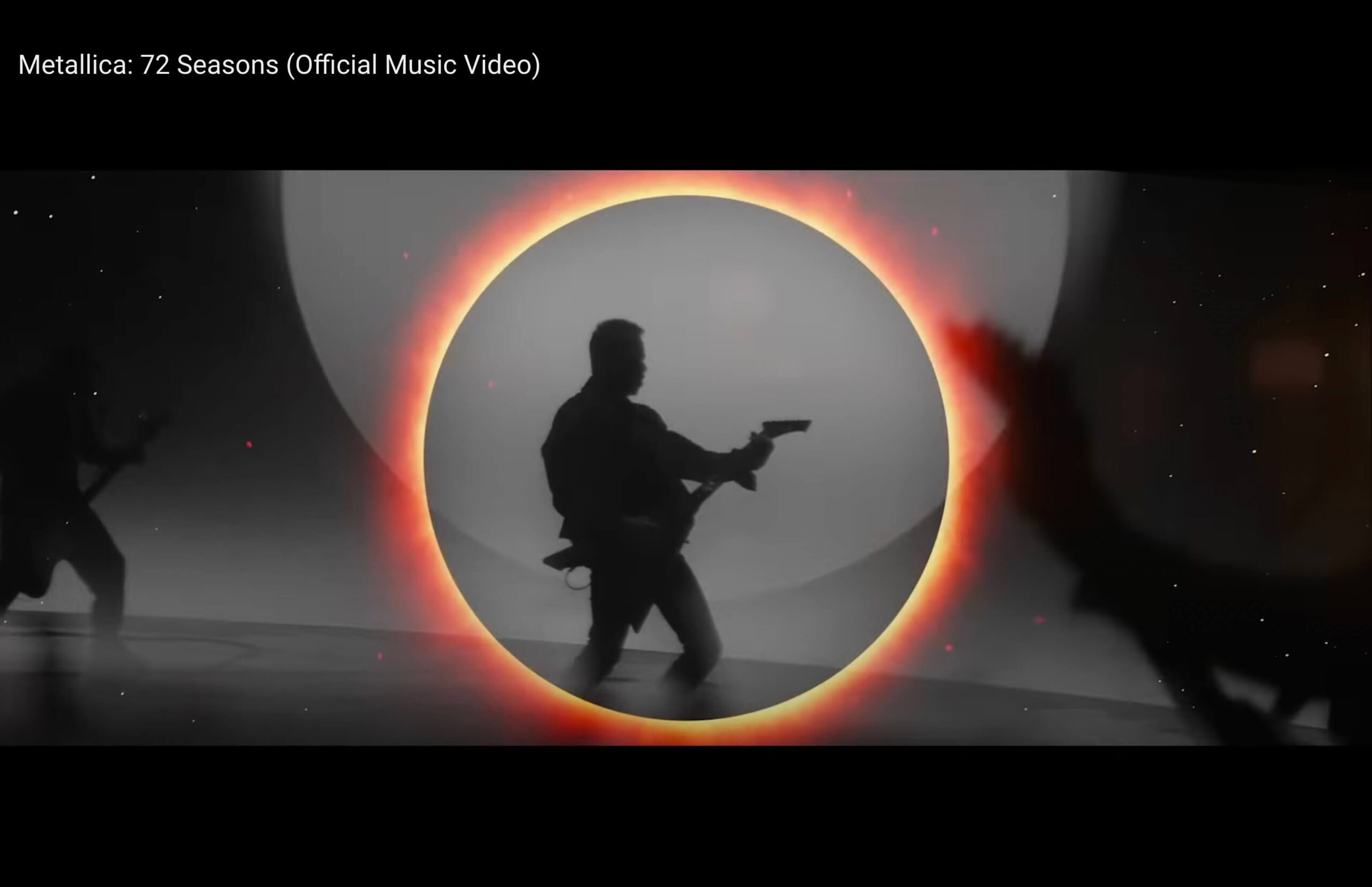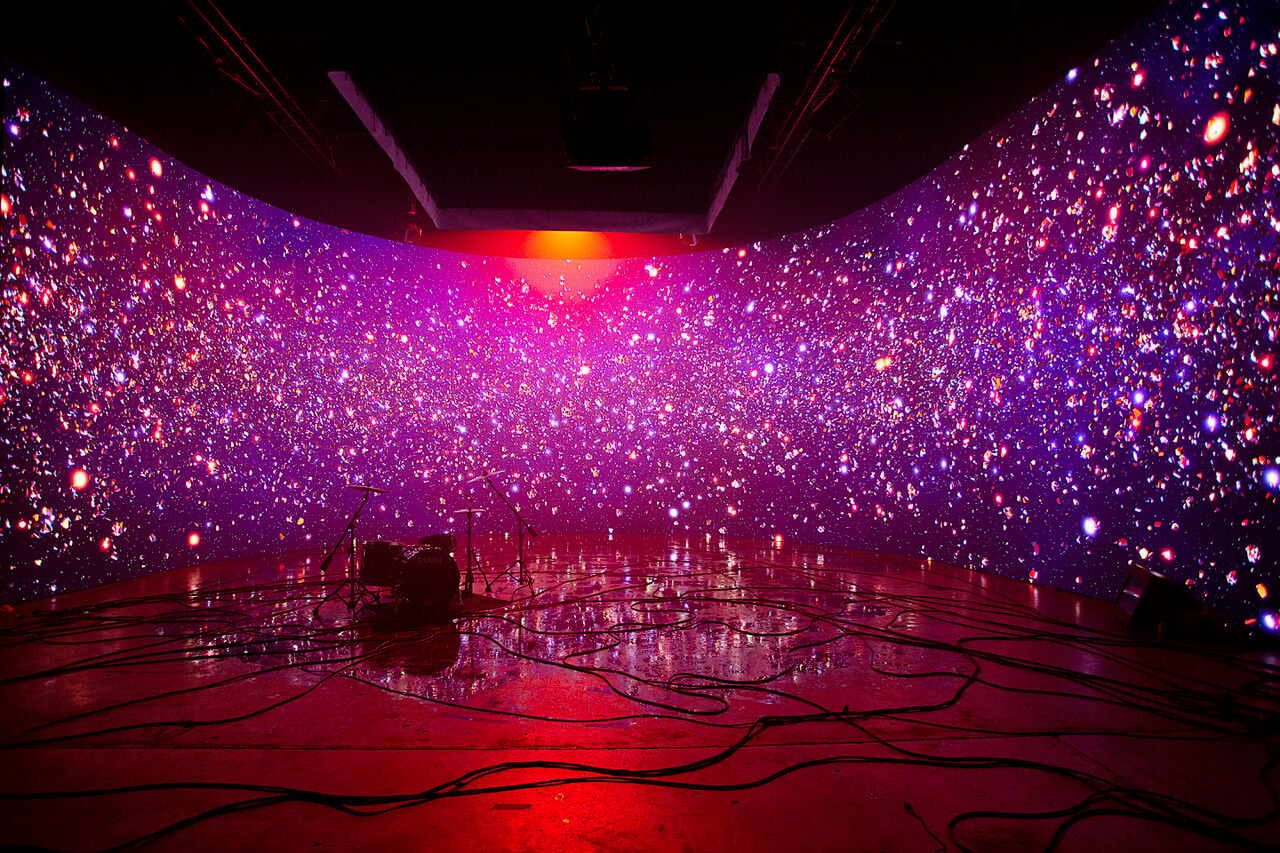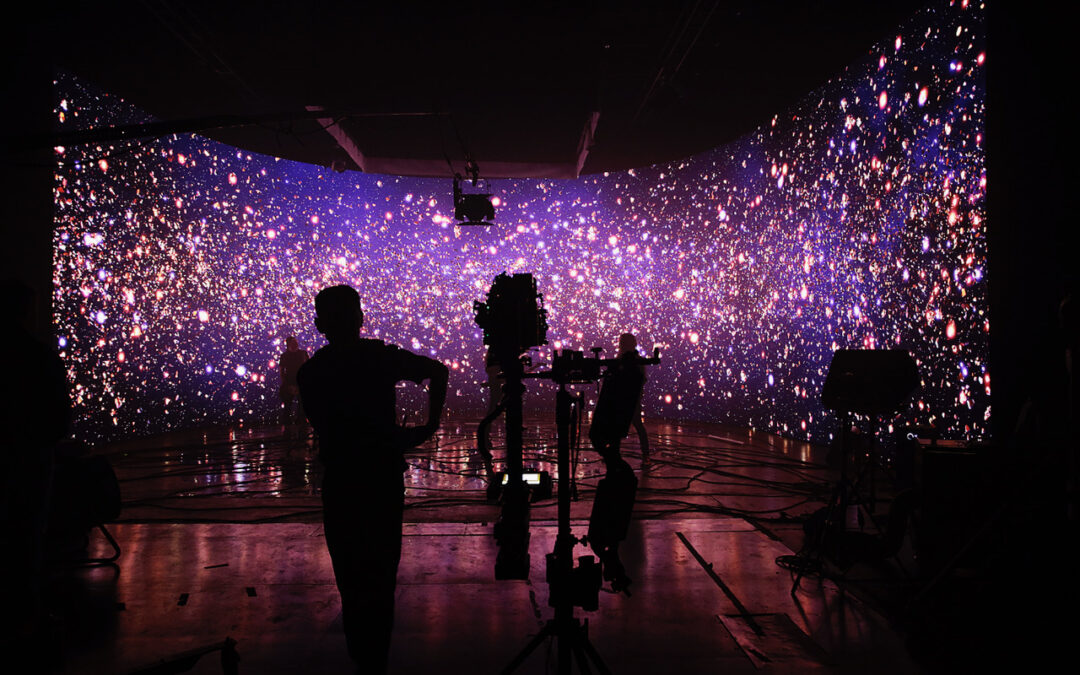Above image: Director Tim Saccenti directs Metallica in front of Kelly Richardson’s Origin Stories. Credit: Setta
CBC As It Happens Interview
CBC As It Happens interviewed Kelly Richardson and Setta Studio (Director, Tim Saccenti and curator, Dina Chang) about the inclusion of her art in Metallica’s title track music video for 72 Seasons, and worldwide cinema screening. Listen to the interview and read the full article (partially quoted below)!
Art that ‘cuts to your core’
Tim Saccenti and Dina Chang, who run a creative studio called Setta out of New York City and L.A., thought Richardson’s art resonated with what they were trying to accomplish.
“Aside from being longtime fans of her work, we both felt Kelly’s pieces had a particular kind of monumental grandeur, a sense of awe, that mirrored the sonically heavy sound of Metallica,” Saccenti said in an email.
“There’s a primal unease to her pieces that cuts to your core.”
The video features the band rocking out, surrounded by swirling, almost fire-like visual effects, against a massive digital projection of imagery.
Included in that imagery are three of Richardson’s pieces — Origin Stories, and Origin Stories (AR), which she described as looking like “a big field of stars,” and Halo, which depicts an eclipse.

Above image: still from Metallica’s 72 Seasons music video featuring Kelly Richardson’s work HALO
“At one point you actually see James Hetfield inside the eclipse,” Richardson said.
Richardson’s work is made to be projected on screens in galleries and museums, but this was far more massive than her usual exhibitions.

Above image: ‘Origin Stories’ projected in a Volume Stage on the set of Metallica’s 72 Seasons music video shoot. Credit: Setta
When Origin Stories was displayed, Saccenti says “the 100-person strong crew of bustling technicians and creatives went silent in respect.
“It was a perfect mix of spectacle and emotion, creating a near mythological environment to capture the band in,” he said.
Richardson describes the piece as “a debris field made up of crystals or diamonds, and they’re floating in space.” The diamonds, she said, represent extinct species.
“In my practice, I’ve explored many ideas which illustrate anxieties about where we’re heading as a species, really, in relation to climate change. And in this work in particular, I’m trying to visualise the extinction crisis that we’re currently in the midst of,” she said.
“Ultimately, I’m trying to engage people, or all of us really, in conversation, asking us to really ask ourselves what it is that we truly value.”
